The Omega Constellation Co-Axial Master Chronometer 41mm
Dark and handsome with impeccable timing.
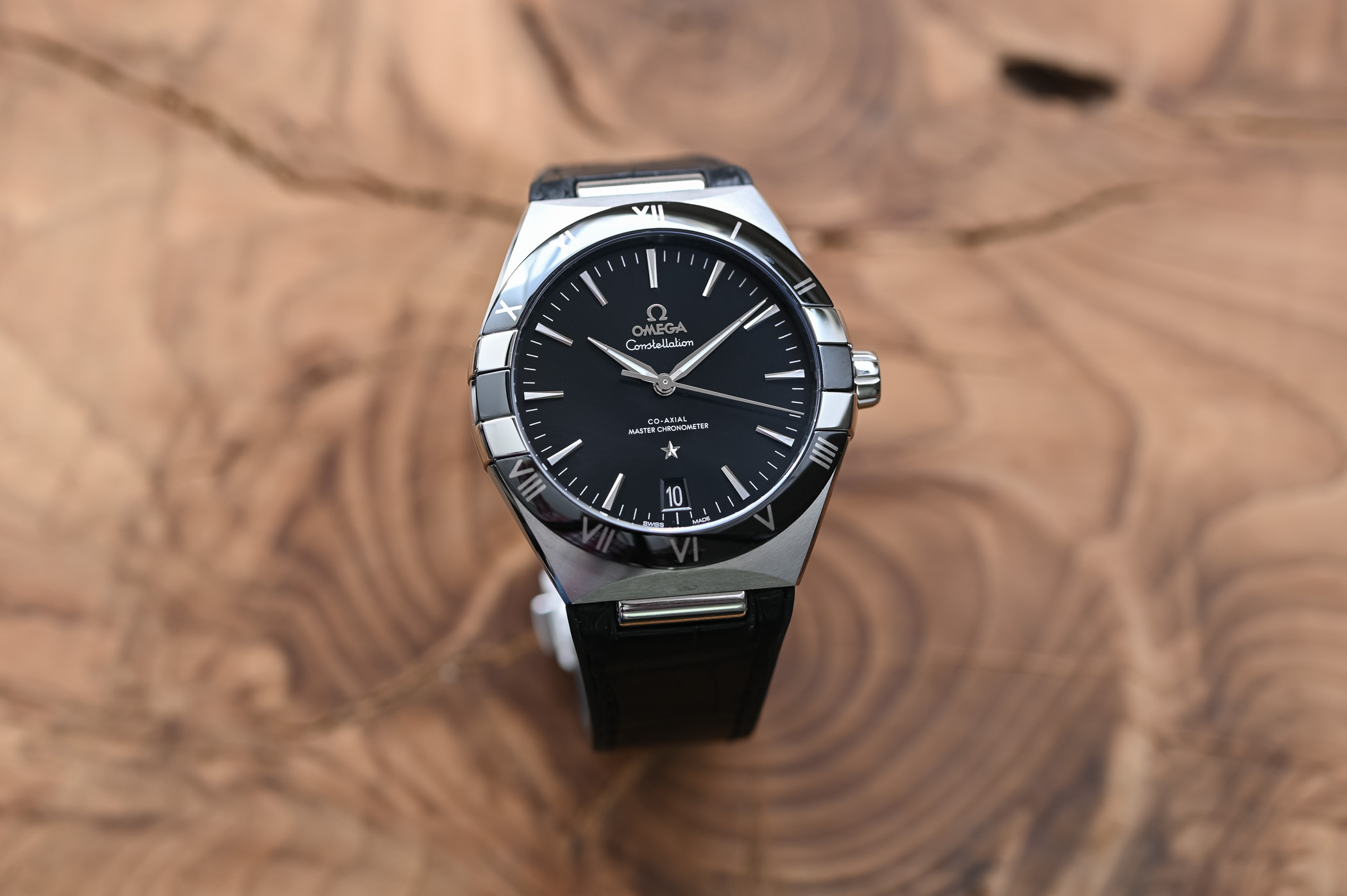
Although it doesn’t have the cachet of a Speedmaster with its legendary Moon landing or a Seamaster worn in an action-packed James Bond episode, the Omega Constellation is one of the brand’s oldest and most enduring collections that started life in 1952 as a precision chronometer wristwatch. Revisited over the years, the transformation that most influenced the contemporary look of the Constellation took place in 1982, the year the watch got its claws. Following the update to the 29mm Constellation Manhattan ladies’ model in 2019, the gent’s 39mm and 41mm were also upgraded in 2020 and equipped with Master Chronometer calibre 8800. The time-and-date watch we are looking at today is the handsome 41mm steel version with a black dial and integrated strap. Although we have often referred to it as a luxury sports watch – given its shaped case, raised bezel and integrated bracelet – having handled the sleek black dial and bezel version, I am tempted to relabel it as a very dressy watch in a refined yet sporty case.
Brief background
The Omega Constellation collection was the sequel of Omega’s Centenary, an automatic, chronometer-certified wristwatch launched in 1948 to celebrate the brand’s 100th anniversary. Gauging the interest taken in the limited-edition Centenary, Omega decided to produce an automatic wristwatch line with chronometry status. Equipped with calibres 351, 352 and 354 with bumper rotors, the first Omega Constellation appeared in 1952 and featured a star above the 6 o’clock marker and a sealed caseback with a medallion of the Observatory of Geneva crowned with a constellation of eight stars. The observatory referenced Omega’s exploits in chronometry and its world precision records set in 1933 and 1936 at Kew-Teddington.
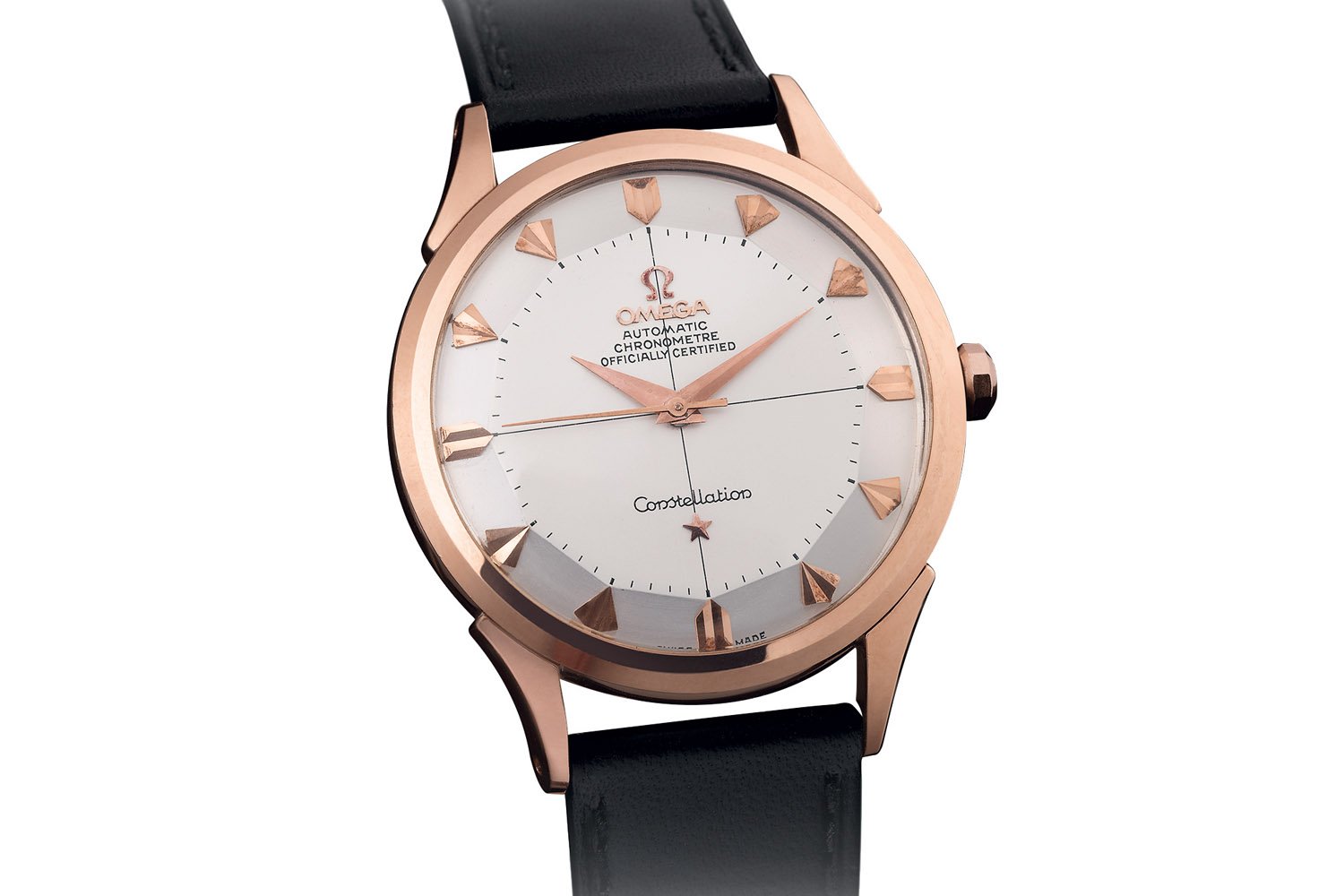
Following a decade or so marked by pie-pan dials and straightforward round cases, by the mid-1960s, the pie-pan dials had given way to flat dials and more elaborate case shapes, leading to the integrated bracelet models of 1969. Omega embraced the arrival of quartz technology and its potential for ultra-thin watches and, as you can see in the images of this in-depth history of the Constellation article, produced some pretty funky Constellations during this period.
However, the ‘big’ design moment of the Constellation was in 1982 when the Omega Constellation Manhattan family got its claws. The four screwed claws that would become the hallmark feature of the Manhattan, extending from the case over the dial at 3 and 9 o’clock, were not just a design detail but held the sapphire crystal and gasket firmly against the case to ensure the water-resistance. In keeping with the mood of the 1980s, the cushion-shaped case was smoothed out and rounded with scalloped half-moon facets at either end of the case and an integrated bracelet with hinged links. The overall impression was of smooth surfaces and a continuous design that flowed from the case to the metal bracelet. Other design cues associated with the Constellation Manhattan were the Roman numerals on the bezel, two-tone metal combinations and an integrated bracelet with hinged links.
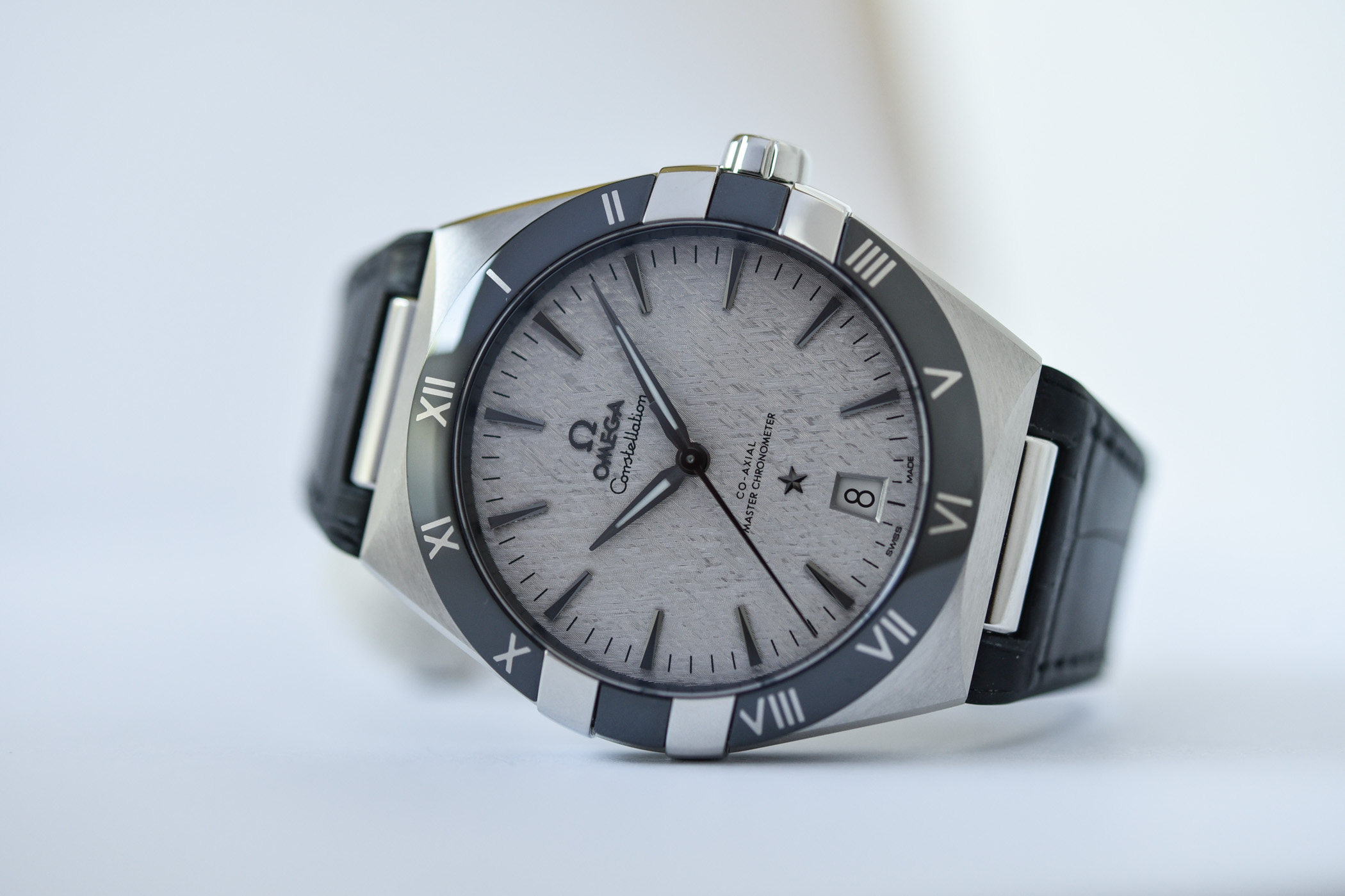
Omega’s impressive Master Chronometer-certified movements made their debut inside the Globemaster in 2015, a watch that heralded the return of the retro pie-pan dials in the Constellation family. In January 2020, Omega introduced its revisited Constellation in 39mm followed by a larger 41mm version about six months later, both equipped with the brand’s latest Master Chronometer calibres.
The Signature Omega Constellation case
The hallmark barrel-shaped case with faceted half-moons and claws relies on a dynamic combination of brushed and polished surfaces to highlight its architecture. The case displays radial and straight-brushed surfaces, while the polished claws and bevels attract the light. With sapphire crystals front and back, the water-resistance is 50 metres – not a colossal amount for a luxury sports watch but enough to get by.
The new 41mm case size introduced two years ago is a more contemporary diameter. Still, it’s always good to know that a 39mm model with practically the same specifications for men with smaller wrists is available. The height, at about 13.5mm, is on the thick side for the genre, and if it remains highly comfortable, a bit more thinness would have been welcome. But we know that this isn’t the speciality of Omega, which has a tendency to favour robustness of the movements over slenderness.
Another element that attracts and plays with the light is the polished black ceramic bezel with Roman numerals in Liquidmetal. The idea behind using polished ceramic bezels was to capture the look of the original Constellation Manhattan of 1982 that had a shiny sapphire glass. Combined with the polished claws, the glossy black ceramic of the bezel adds a luxurious, elegant touch to the watch. Overall, and despite the monochromatic look of the watch, there are a lot of element to catch the eye, many surfaces, textures and details to animate this watch – it is far more lively in the metal than on the brand’s official photos.
Discreet, modernized dial
The black dial has a silky sun-brushed finish that plays with the light in a far more subtle way; a domed sapphire crystal protects the dial with anti-reflective treatment on both sides to avoid any unwanted reflections. The thin triangular hour markers are faceted and display brushed surfaces and polished edges. Harking back to the star featured on the dial of the first Constellations, you can see a rhodium-plated start placed just above the date aperture at 6 o’clock. Although it’s hard to discern in our photographs, the sun-brushed pattern on the dial emanates from the centre of the star. The only trace of lume on the Constellation is on the slim central hour and minute hands.
The ultra-precise Omega Calibre 8900
Like the original models of 1952 that flaunted their impeccable chronometry, the Constellation 41mm collection is equipped with Omega’s in-house Co-Axial Master Chronometer calibre 8900. A more powerful movement than the calibre 8800 inside the 39mm, the large rhodium-plated rotor of the automatic movement delivers power to the twin barrels offering 60 hours of power reserve. As you would expect from its Master Chronometer certification, the movement is equipped with Omega’s latest technology, meaning a co-axial escapement, silicon parts and an impressive resistance to magnetic fields of up to 15,000 gauss. Visible through the caseback, the movement is decorated with arabesque Geneva waves and blackened screws.
Thoughts
Of the eight Constellation 41mm currently in the collection, some with flashier two-tone cases and textured dials, this steel model with a black dial and bezel is the most elegant. Although it does have the attributes of a luxury sports watch – shaped case, raised bezel, integrated bracelet – it has a dressier appeal despite a case thicker than we’d like. The water-resistance is low, and the scarcity of lume disqualify it as a sports watch, and its 41mm diameter disqualify it as a dress watch. At the end of the day, categories are limiting. The Constellation 41mm is a handsome, well-built precision chronometer that will look good in just about any situation.
Availability & Price
The presented edition of the Omega Constellation Co-Axial Master Chronometer 41mm (ref. 131.33.41.21.01.001) comes on an integrated black leather strap with a decorative metallic link connecting each side of the strap to the case. The watch is now available from boutiques, retailers and online from Omega’s website, and is part of the permanent collection. It is priced at EUR 6,400 (incl. VAT).
More information at Omegawatches.com.

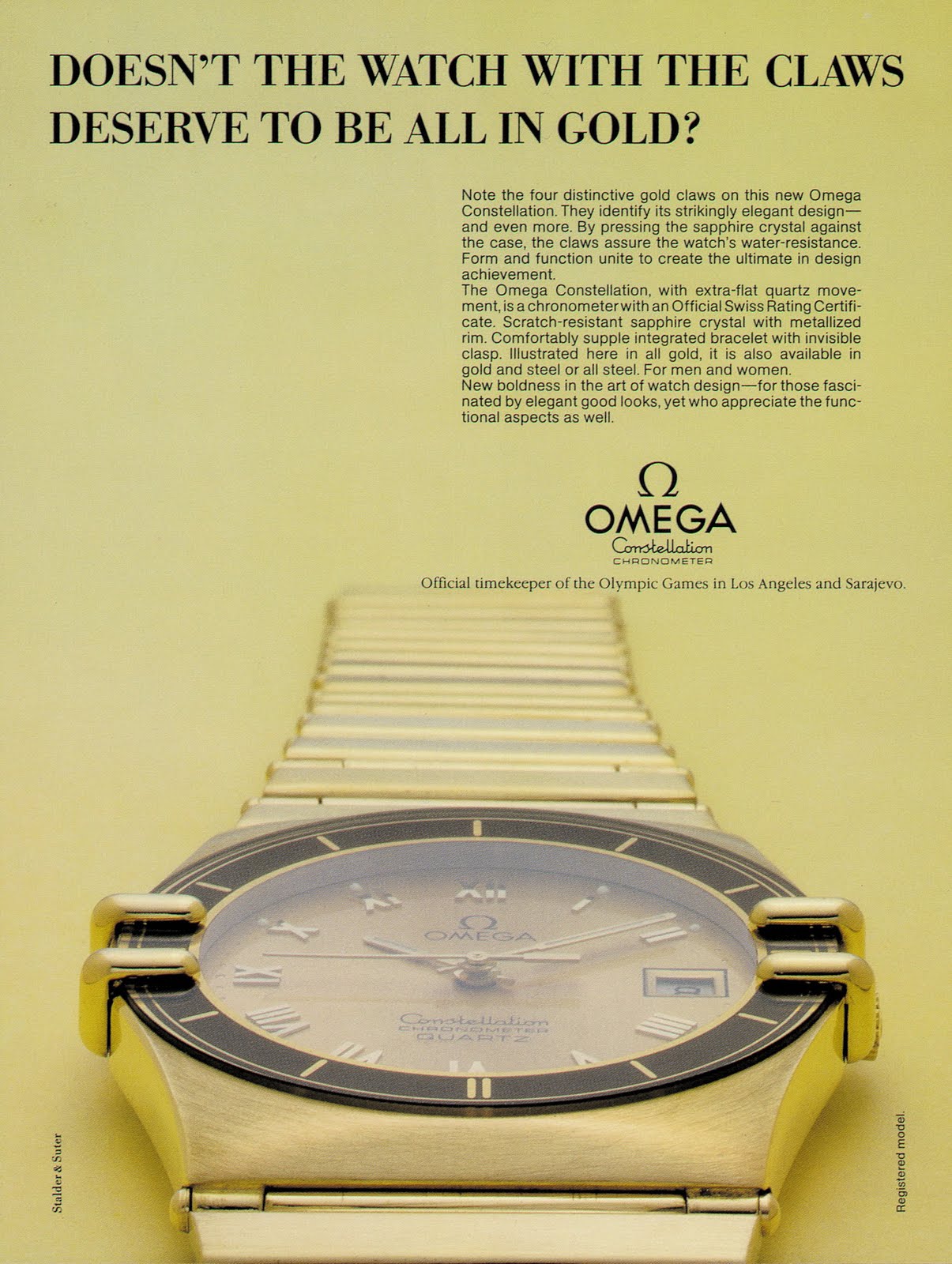
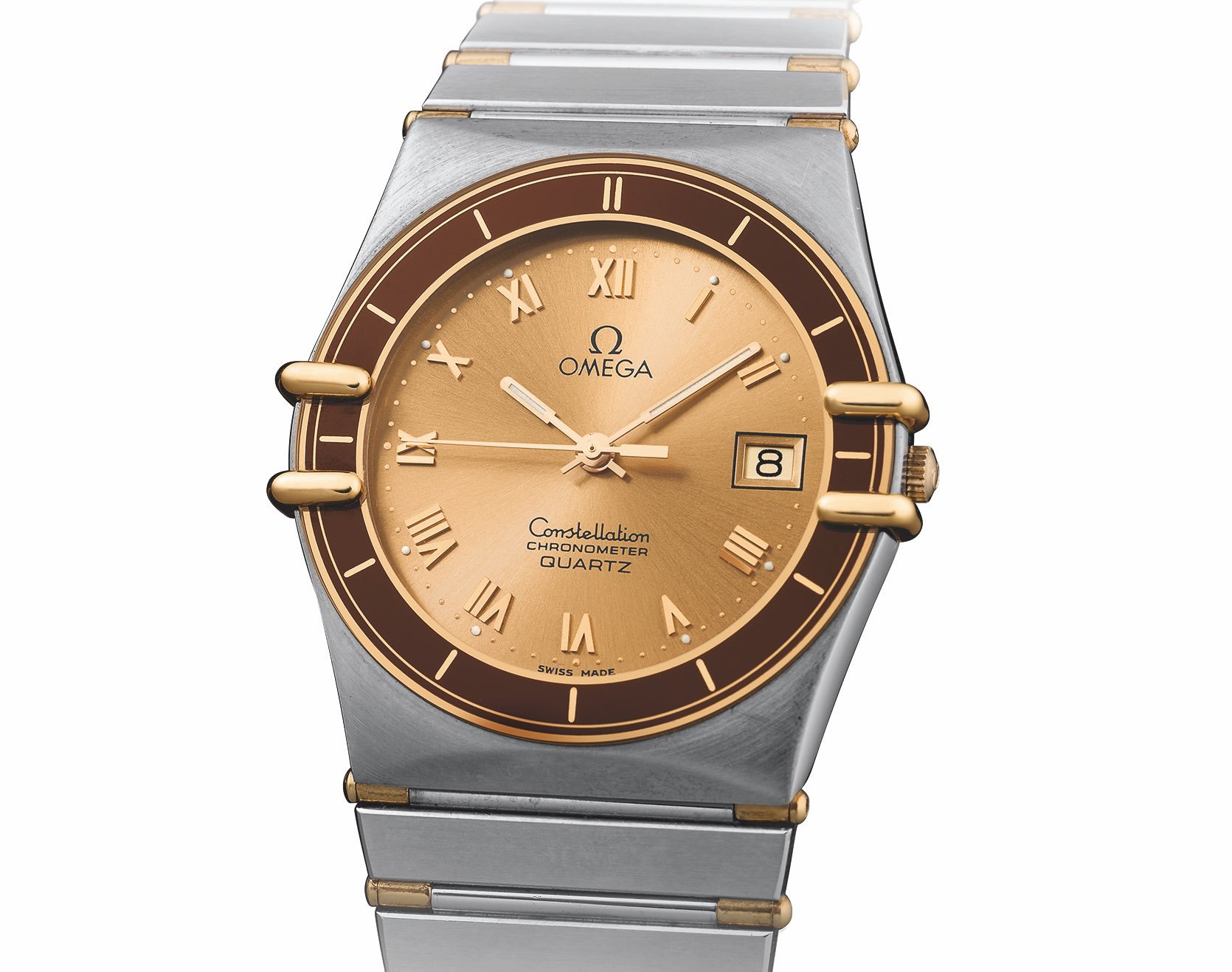
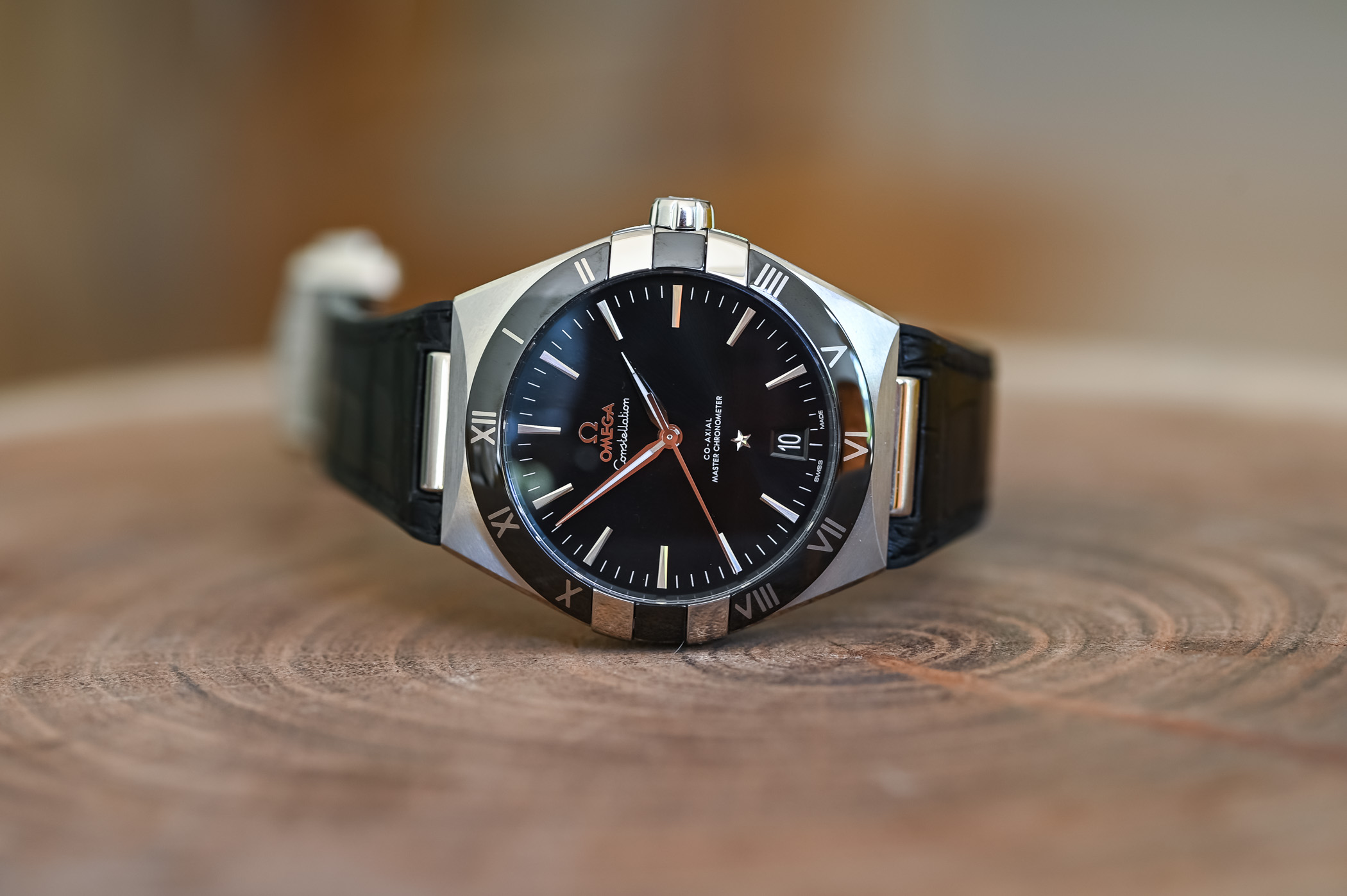
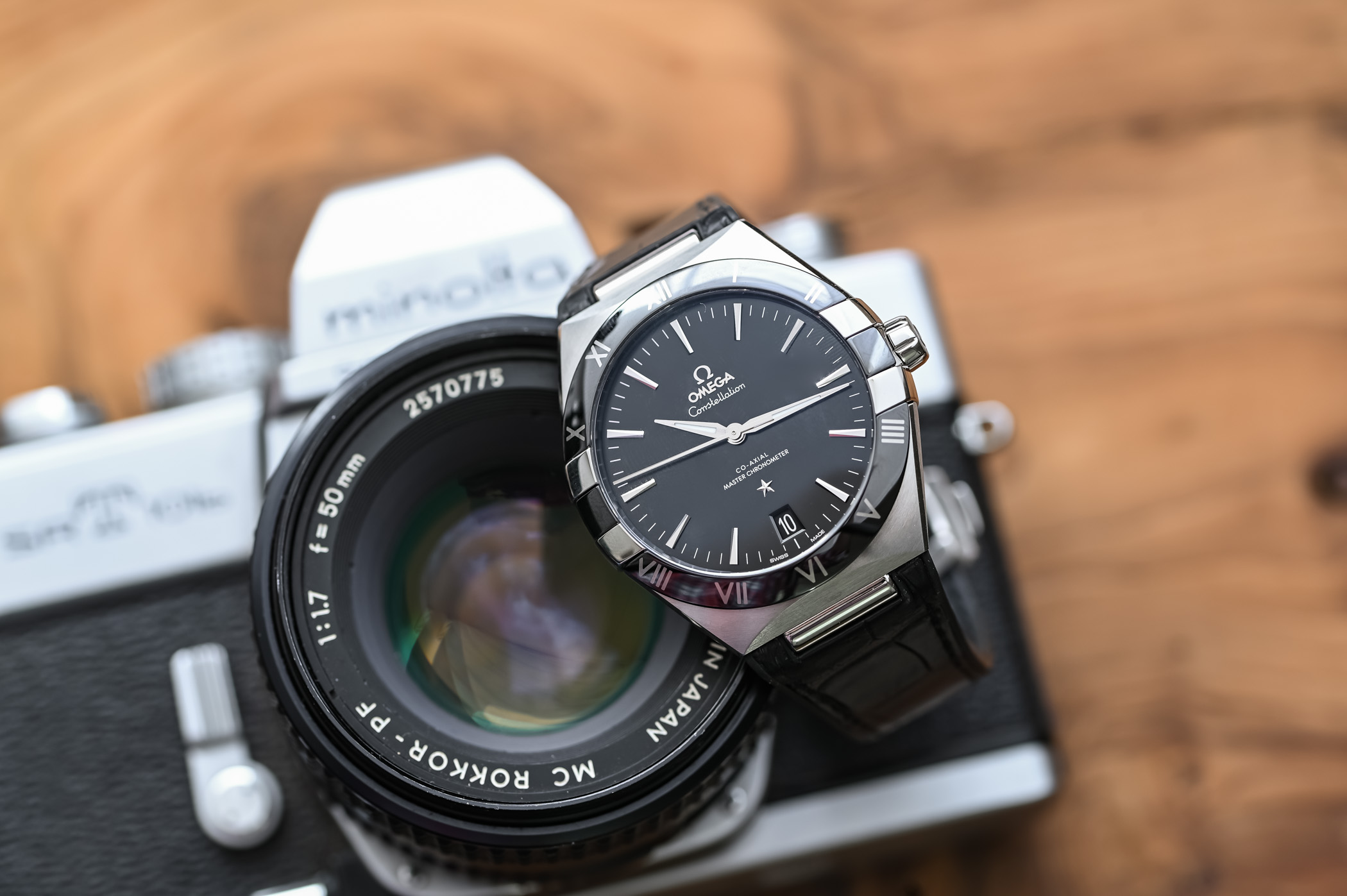

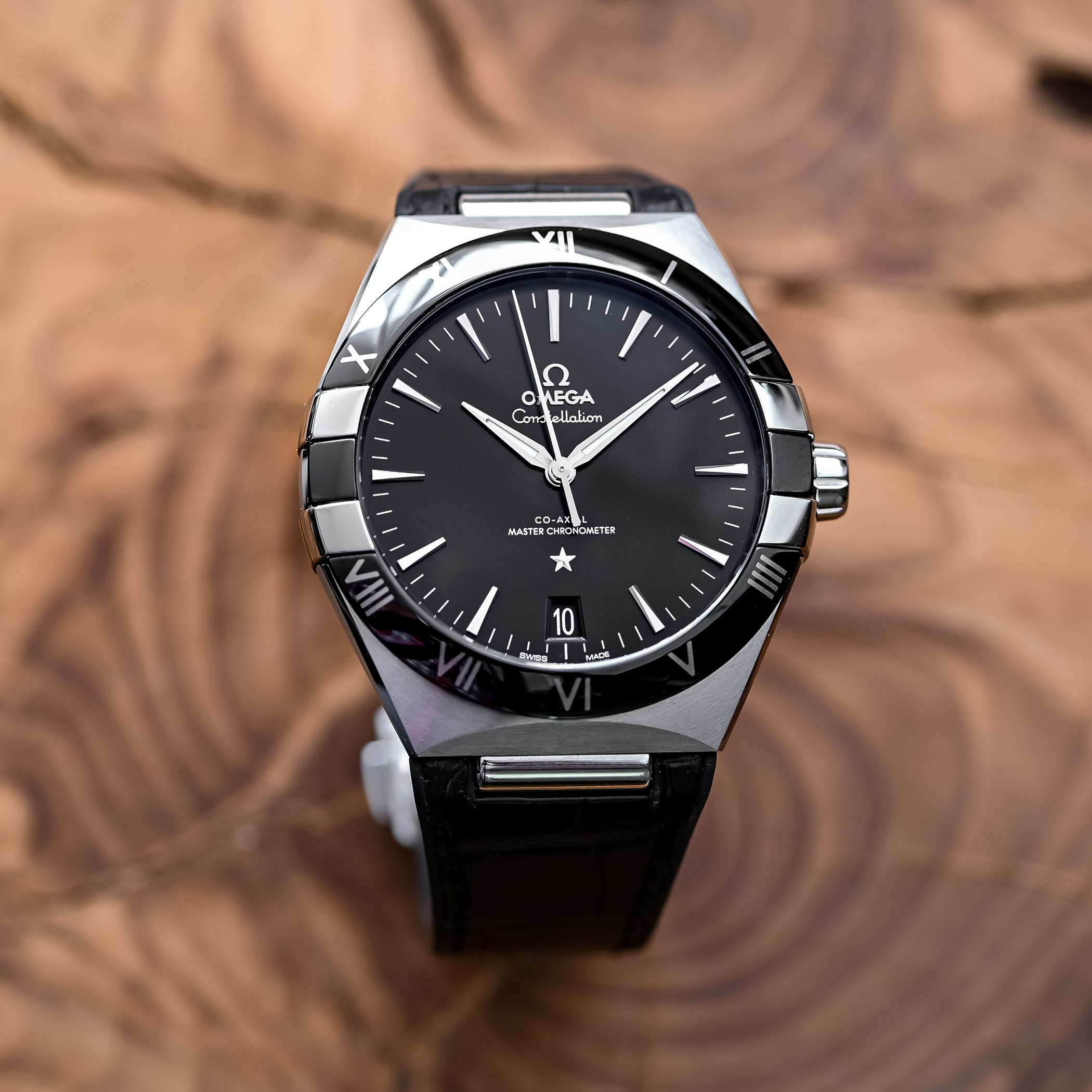


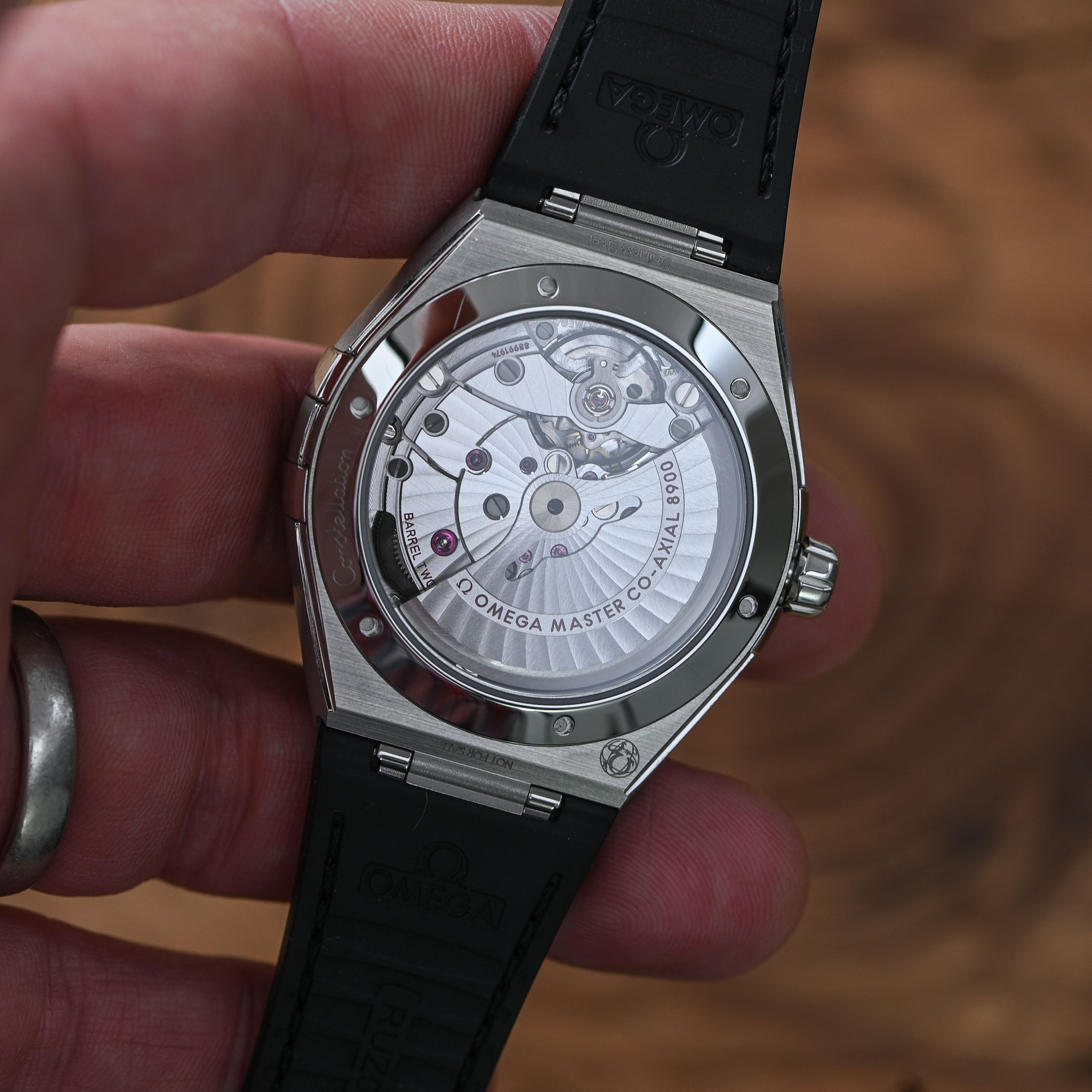

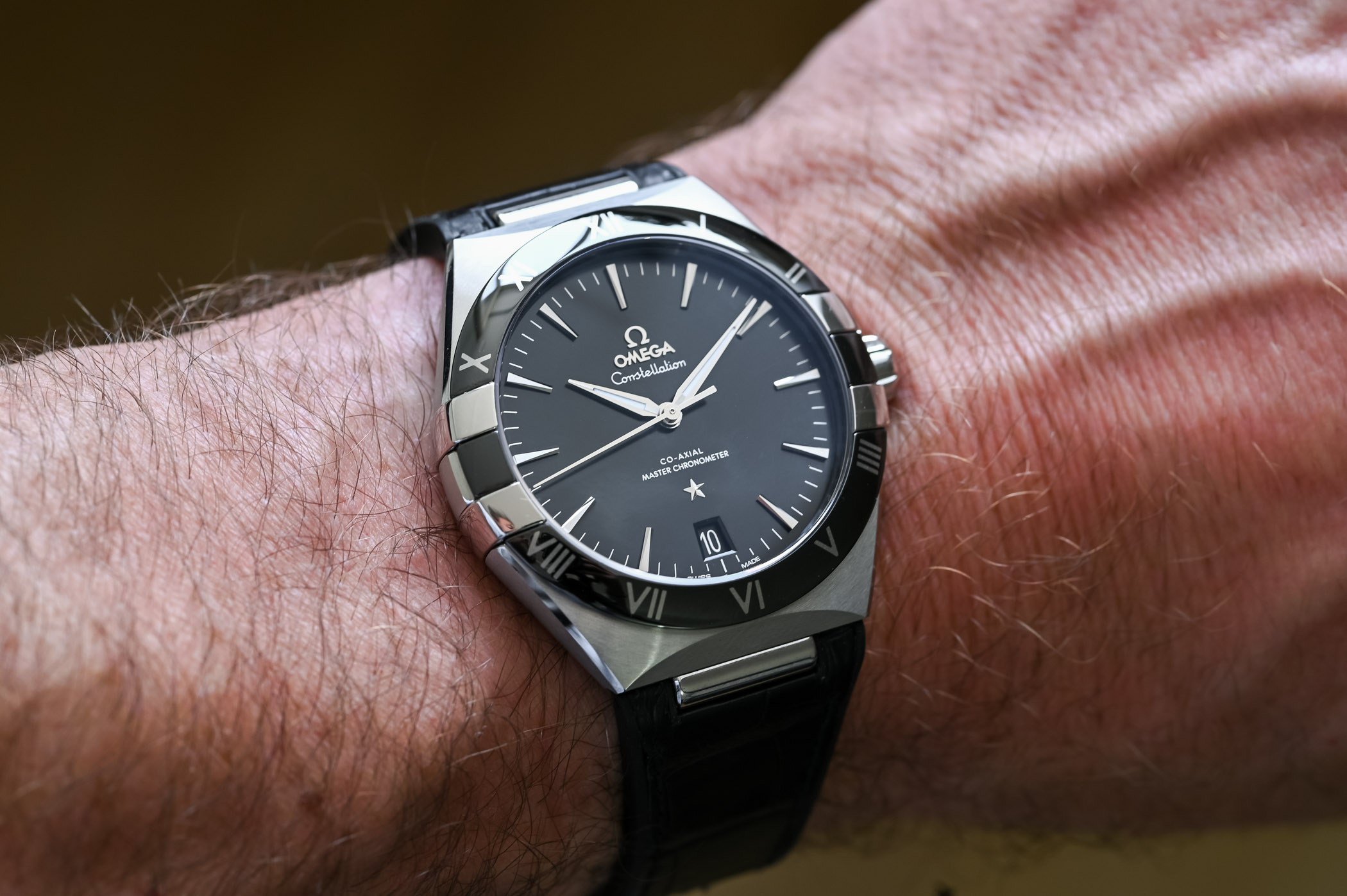



5 responses
I am impressed with the performance of Omega co-axial movements but have yet to find one that looks ok as well. I’ll keep looking.
Thank you for the unexpected but welcome hands on review of the Constellation Manhattan 41mm. I think the title of the article ought to make it clear that this is a review of a watch in the Manhattan range of the Constellation family rather than just refer to the Constellation range because, as pointed out there are two Constellation families – the Manhattan and the Globemaster. Apart from the “claws” or “griffes” which link this watch to the 1982 “Manhattan” design there are several other design elements that identify this watch’s connection to modern New York, for instance the hour markers are actually miniature representations of the facets on the Freedom Tower building. With regard to the movement in this watch and the Cal.8800 in the 39mm version the two movements are not related so it is not correct to say that the Cal.8900 is a “more powerful” version of the Cal.8800. These two movements are quite distinct and share no parts. The Cal.8900 is a slightly modified version of the previous Cal.8500G (the “G” indicating “Gauss” and thus the anti-magnetic version of the Cal.8500B, this was the first version of the movement to have a silicon balance spring as opposed to a metal balance spring as found in the Cal.8500A). The modifications are limited to a slight redesign of the co-axial escapement wheels and a few smaller parts that have been rendered in “Nivagauss”, an amorphous metallic material developed, in part, by Omega. The Cal.8900 retains the Cal.8500’s sleeve bearing for the rotor, meaning it is virtually silent in operation. The Cal.8800 is a newly developed movement not based on a pre-existing Omega movement such as the Cal.8520 (a claim often erroneously made). It has a brand new architecture and shares no parts with the Cal.8900. It is a smaller diameter, 26mm as opposed to 29mm in the case of the Cal.8900 but most usefully it is thinner than the Cal.8900 at 4.9mm whereas the Cal.8900 is 5.5mm. These dimensions allow Omega to fit the Cal.8800 into watches that have previously used the Cal.2500 movement as the dimensions are closer to the Cal.2500 (25.6mm diameter and 4.1mm in height). The Cal.8800 also uses a ball bearing central mount for the rotor which does make it noticeably noisier in use than the Cal.8900. Finally the METAS testing criteria for these two movements vary quite a lot. The Cal.8900 is classed as a category 1a movement and the CAl.8800 is classed as a category 1b movement due to its size. The difference is that the tolerances for the category 1b Cal.8800 are not as tight as they are for the category 1a Cal.8900 movement.
SPQR‘s comment is excellent! I would like to see more comments like his assuming SPQR is a he?
I’ve been eying these watches for some time, however the 41mm is to large for my wrist size; make this watch in a 40 or 39mm size with Cal. 8900 movement and Omega will have customer.
if I put aside the Speedmaster watches aside I think the constellation are the most beautiful watches from Omega , but… the are not for small wrist size.
Thank you to Raoul for your very gracious comment. With regard to how this watch wears the diameter is largely irrelevant. There are comments that this watch is too large but this is not necessarily the case. The Constellation Manhattan has a “cushion/barrel” shaped case and as such it does not wear anything like the 41mm Seamaster 300 for example. The lug to lug distance is only 44mm which is not too large by any measure and will fit a variety of wrist sizes. The Omega website actually has a “visualizer” on the webpage for every watch so you can see how it might fit. This means that the only real issue with the watch is the thickness of the case, at 13.5mm tall again this is not too much for most people and fits in with the “sports” watch character that the Constellation Manhattan has. Also, as with most Omega watches, the watch is designed to be worn on a properly fitted strap or bracelet, by which I mean not loosely so it moves from your wrist to your elbow, and when worn like this is the watch will “nestle” into your wrist and the height becomes a non-issue. My personal take on this watch is that Omega are being their usual contrarian selves, the Constellation Manhattan is certainly in the “integrated bracelet stainless steel sports watch” ballpark but Omega fitted it with a water resistant alligator and rubber strap instead of the bracelet one might expect. Then the water resistance is also half what one might expect from a watch of this sort. Go figure. The only thing I can say about the water resistance is that as each Omega METAS watch that is bought by a customer has passed the METAS water resistance test it really does mean the watch can withstand 50M of pressure (you can see the METAS results for your watch on the Omega and METAS websites using a QR code reader when you buy the watch). Other watch makers do not test every individual watch they sell but rather “sample test” them so the individual watch you buy may not have actually been tested at all so the 100M of water resistance you are promised can be theoretical rather than real.